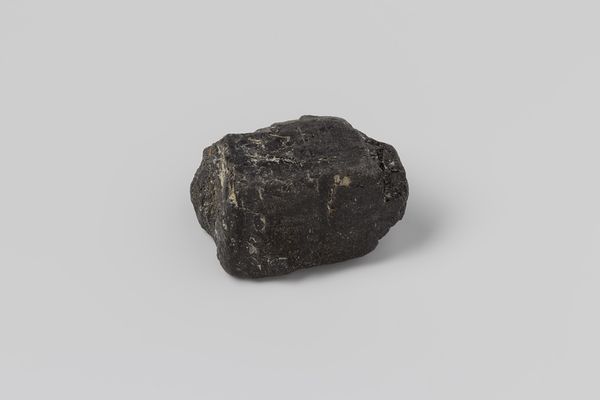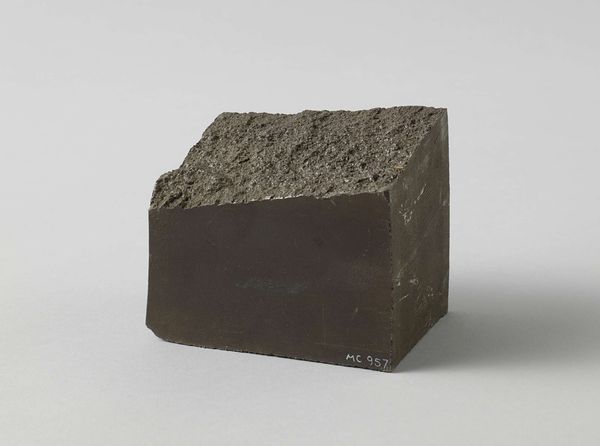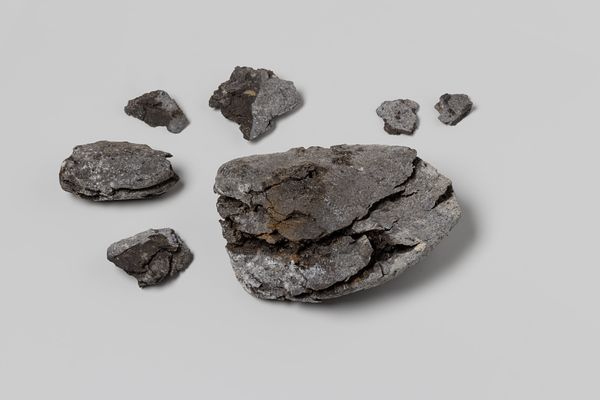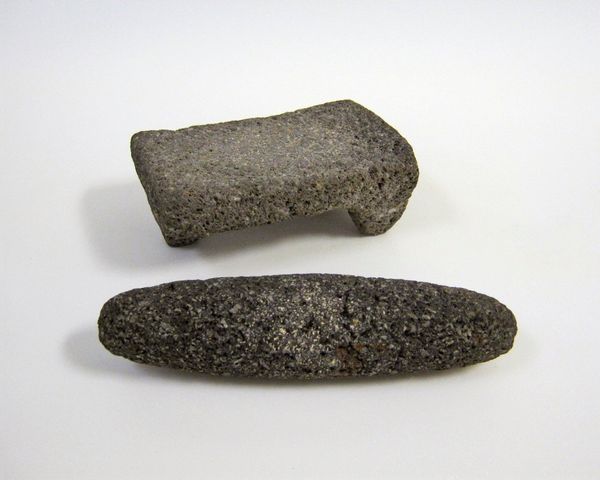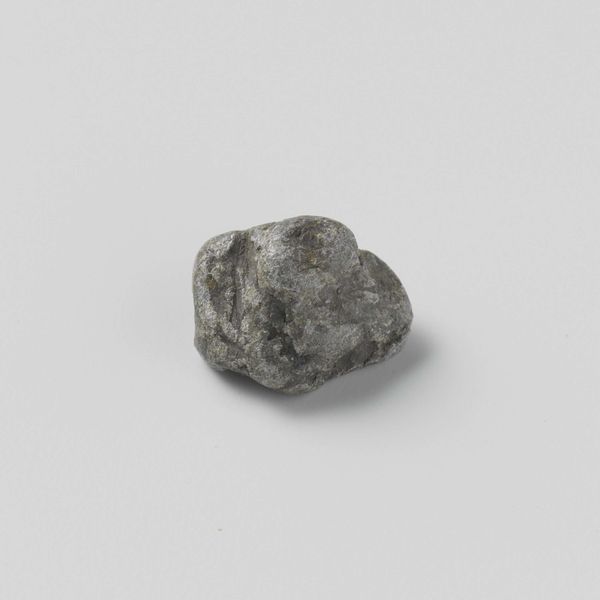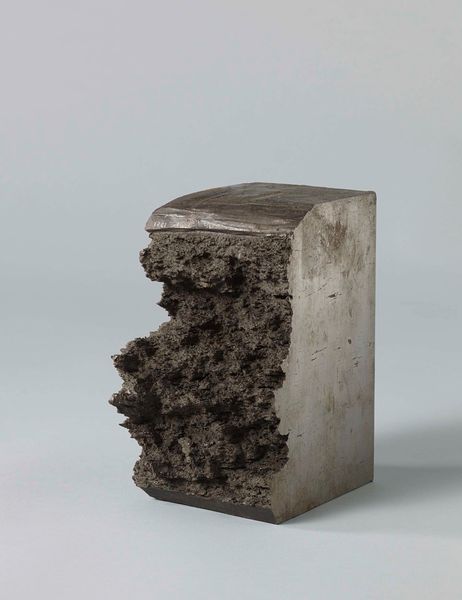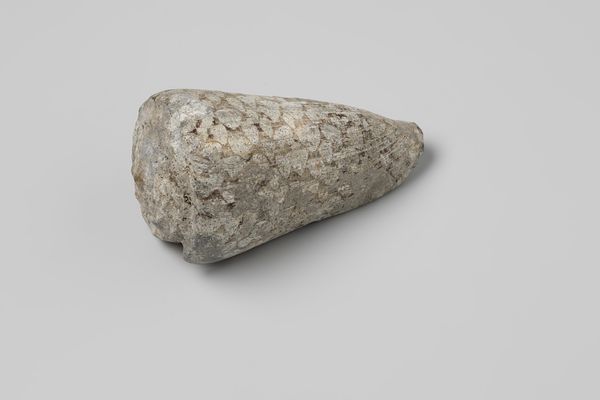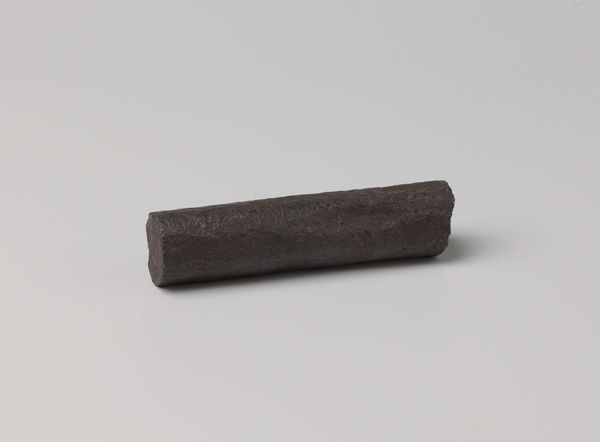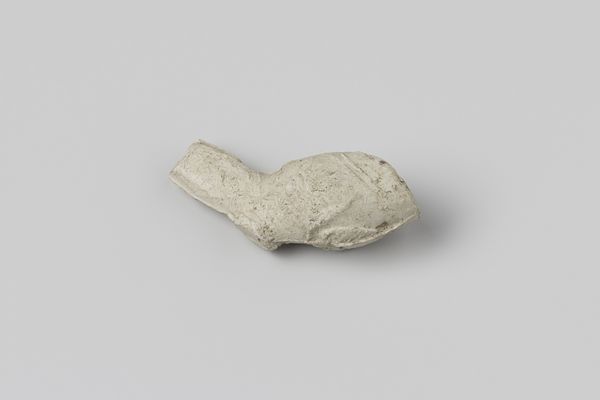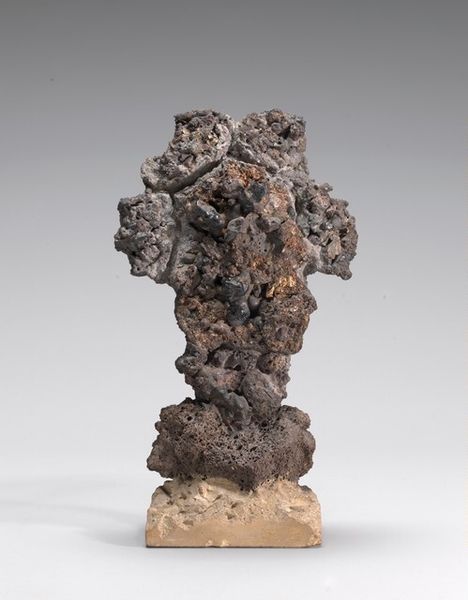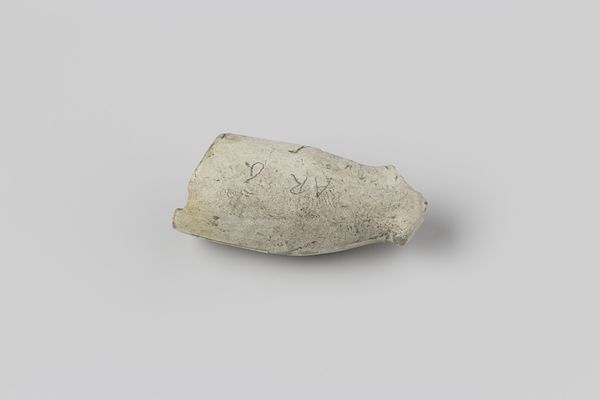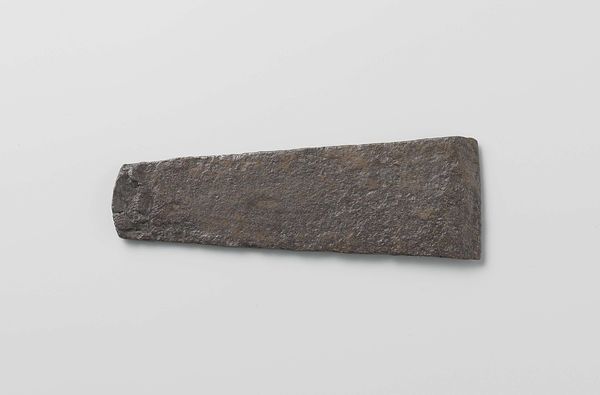
Porcelain and pepper from the VOC trading ship the Witte Leeuw before 1613
0:00
0:00
nietvantoepassing
Rijksmuseum
assemblage, ceramic, found-object, sculpture
#
assemblage
#
sculpture
#
ceramic
#
found-object
#
sculpture
#
matter-painting
Copyright: Rijks Museum: Open Domain
Curator: What a stark relic! "Porcelain and pepper from the VOC trading ship the Witte Leeuw," a rather descriptive title for an assemblage, wouldn't you say? It dates back to before 1613, a grim echo of maritime ambition. Editor: It looks like some otherworldly volcanic rock, or perhaps the discarded home of a sea creature! A silent monument, almost violently textured, a sharp contrast to what one might imagine as the polished aspirations of the VOC. Curator: Indeed, the visual symbolism clashes beautifully with its origin. These fused remnants speak volumes about loss, and trade gone wrong. The porcelain, now melded with the pepper, forever altered by seawater and time, speaks to cultural exchange disrupted by colonial ventures. What stories those fragments could tell if they only could! Editor: Exactly! You see, pepper, historically, isn't just a spice—it's power. Preservative, a flavor, but also a valuable trade commodity that influenced geopolitical destinies. And porcelain? The delicate emblem of craftsmanship and trade... all reduced to this. It speaks to cultural and symbolic entropy! The very items that fueled dreams of the spice route, now a casualty of its own ambition. Curator: Beautifully put. Consider also the found object element, elevated from the ocean floor into a gallery. The unknown maker of this “matter painting” gives voice to both creation and destruction. And those dark colors evoke an uncomfortable silence. It haunts me in ways that gilded portraits never could. Editor: It's funny; isn’t it? The Dutch Golden Age, represented in the museums by triumphant displays of wealth and exploration...and then this small, humble object whispers a different story. I imagine it sitting here centuries from now; what story will it convey about us? Curator: What a haunting thought! It really is a potent emblem of fleeting glory. Well, on that cheerless note... Editor: Exactly! Thanks for sharing such an illuminating view! I know I’ll look at all pepper grinders and porcelains with renewed depth.
Comments
rijksmuseum about 2 years ago
⋮
The Dutch East India Company (VOC) brought costly Asian goods to the Netherlands. Sometimes a ship would sink underway, as did the Witte Leeuw in 1613. In addition to porcelain – intact pieces as well as shards – the remains of a load of pepper were recovered in 1976. Some pieces of porcelain have fused together with pieces of wreckage and the seabed. The delicate white wine cup became attached to a piece of iron among the shells.
Join the conversation
Join millions of artists and users on Artera today and experience the ultimate creative platform.
